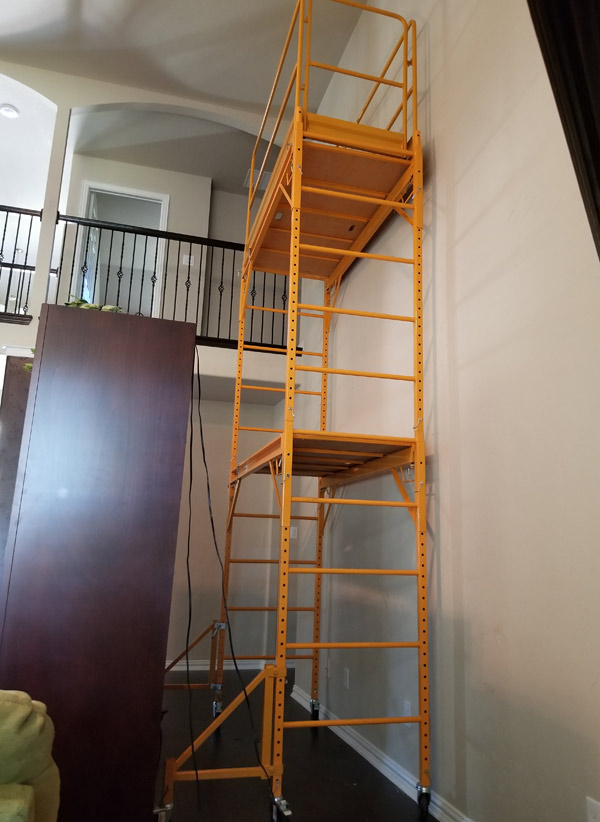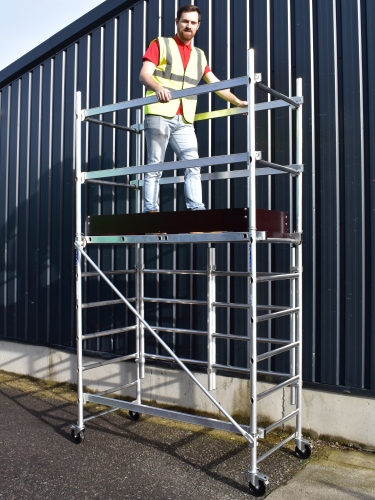The Benefits of Using Stairway Accessibility Scaffolding
Scaffolding on Historical Buildings: Difficulties and Solutions ===============================================================
Protecting historical buildings with scaffolding involves dealing with product destruction and seismic worries. Collaboration between conservation professionals and engineers is essential. Accessibility limitations because of narrow flows require alternate remedies while preserving the building's original facade. Sustainable products and progressed innovation offer ingenious solutions, guaranteeing reliable conservation. Utilizing conventional restoration strategies and regular evaluation is vital for stability and security. https://woolwichscaffolding.co.uk/index.html The mindful balance of these challenges and services is crucial in safeguarding the historic significance of these architectural treasures.
Architectural Obstacles
The architectural difficulties related to scaffolding on historic buildings usually call for a nuanced method to ensure the preservation of the architectural stability. When attending to product destruction, it is essential to recognize the impact of time on the architectural parts of historical erections. Years of direct exposure to ecological problems can cause the degeneration of materials such as wood, stone, or metal, demanding cautious assessment and potentially substitute during restoration jobs.
Furthermore, seismic reinforcing presents one more significant concern when erecting scaffolding on historical buildings. Making certain that the structure can endure possible seismic task without endangering its historic features needs specialized engineering knowledge and precise planning. By integrating seismic enhancing methods right into the scaffolding style, such as base isolators or reinforced frameworks, the historic building can be protected against prospective earthquake damage while still enabling essential restoration job to happen.
Balancing the requirement for architectural reinforcement with the conservation of historic credibility is a fragile yet important aspect of scaffolding on historic buildings.

Conservation Factors to consider

Maintaining the historical relevance of a building throughout scaffolding jobs involves thorough interest to preservation principles and specialized strategies. When working with historical structures, maintaining architectural stability is vital. Scaffolding must be carefully designed and set up to make sure it sustains the structure without endangering its historic attributes. Conservation specialists commonly work together closely with scaffolding designers to establish services that protect the building's special layout components.
One more crucial facet of preservation considerations is the aesthetic influence of scaffolding on historic structures. The aesthetic look of scaffolding can considerably change the perception of a building, especially if it is a popular spots. As a result, procedures such as making use of products that blend in with the structure's facade or integrating attractive components into the scaffolding layout might be necessary to decrease the visual impact.
Gain access to Limitations
Throughout scaffolding tasks on historical buildings, navigating accessibility restrictions poses significant challenges that call for cautious preparation and innovative options. Wheelchair concerns can develop due to slim flows or limited paths around the structure. These limitations may be intensified by the requirement to preserve the heritage aspects of the framework, which can limit the installation of standard scaffolding systems.
Heritage restrictions often determine that the initial fa ade or building components can not be modified or damaged throughout the scaffolding procedure. https://woolwichscaffolding.co.uk This suggests that basic scaffolding approaches might not be applicable, requiring experts to design alternative access techniques that are both important and considerate of the structure's historic significance.
Moreover, flexibility concerns can affect the effectiveness of the building and construction job, potentially extending project timelines and enhancing expenses. It is necessary for task managers to perform complete site analyses and collaborate closely with heritage conservation authorities to create tailored remedies that deal with accessibility restrictions while protecting the integrity of the historic building.
Cutting-edge Solutions
Handling gain access to restrictions on historic structures throughout scaffolding jobs calls for the expedition of cutting-edge solutions to ensure effective and considerate conservation of the framework's heritage relevance. One such service includes making use of lasting products in the construction of scaffolding. By selecting environmentally friendly materials such as bamboo or recycled steel, the ecological impact can be minimized while still supplying the needed assistance for remediation job.
Additionally, the assimilation of sophisticated technology can likewise offer cutting-edge options for scaffolding on historical buildings. For example, using drones furnished with high-resolution cams can assist study hard-to-reach locations of the structure, supplying beneficial information for the scaffolding design process. In addition, 3D printing modern technology can be used to produce personalized scaffolding components that precisely fit the special shapes of historic structures, ensuring a secure and tailored fit.
Finest Practices
Executing industry-established guidelines is important for making certain the effective and delicate execution of scaffolding tasks on historic structures. When it concerns best methods for scaffolding on historical buildings, it is essential to think about not only the architectural facets yet additionally the historical and aesthetic significance of the building. Right here are some bottom lines to keep in mind:
Use of Typical Reconstruction Techniques: Using conventional reconstruction strategies can assist maintain the authenticity and historic stability of the structure.
Routine Monitoring and Inspection: Normal tracking and examination of the scaffolding structure is important to guarantee its security and safety, along with to stop any type of damage to the historic structure.
Attending To Visual Concerns: Taking notice of aesthetic issues such as the visual impact of the scaffolding on the structure's exterior is essential. Utilizing materials and shades that blend in with the structure's architecture can aid lessen aesthetic disruptions during the reconstruction process.
Often Asked Concerns
What Are the Governing Demands for Scaffolding on Historic Structures?
Conservation standards and safety measures are crucial when erecting scaffolding on historical structures. Regulative demands focus on keeping historical importance while making sure structural integrity and worker safety. Compliance with these requirements is crucial for successful reconstruction jobs.
Exactly How Do Weather Conditions Impact the Use of Scaffolding on Historical Frameworks?
Weather play an important function in the preservation challenges of historic structures. From severe temperatures to high winds and precipitation, these aspects can influence the stability and efficiency of scaffolding used for upkeep and remediation job.

Are There Particular Insurance Considerations for Making Use Of Scaffolding on Historical Buildings?
Insurance policy insurance coverage for scaffolding on historic buildings needs specialized policies because of the distinct dangers related to heritage preservation. Aspects such as the structure's age, historical relevance, and potential for damages during repair work must be thoroughly thought about in these plans.
What Are the Possible Threats and Obligations Associated With Scaffolding on Historical Structures?
Scaffolding risks on historical structures pose significant obligation problems, impacting heritage preservation and architectural integrity. Problems such as damage to delicate exteriors, possible architectural weakening, and historic value jeopardization need to be meticulously taken care of to guarantee preservation efforts achieve success.
Just how Do Social and Neighborhood Factors To Consider Play a Role in making use of Scaffolding on Historical Frameworks?
Cultural preservation is vital in preserving the credibility of historical frameworks. Neighborhood involvement ensures that regional worths and point of views are taken into account when using scaffolding on these structures, cultivating a collective approach that appreciates heritage while addressing functional requirements.
Final thought
To summarize, scaffolding on historic structures offers structural difficulties, preservation factors to consider, and access constraints.
Nonetheless, ingenious solutions and ideal techniques can assist mitigate these challenges and assure the effective conservation of these beneficial frameworks.
It is important to carefully prepare and apply scaffolding jobs on historic structures to shield their honesty and historic value for future generations.